I’m one of the top 5% best selling trading book authors in the world. My first book was a run-away success. And yet I’m about to self publish my next work. Why would an established author want to self publish?
There is an unjustified perception that self publishing means poor quality. Let me tell you why that’s not necessarily true.
Publishing Houses and Quality Assurance
Publishing houses are very careful with screening the quality of authors and their text. They do background checks, verify claims made by the author, fact check contents, provides professional images and layout, ensures a swift and streamlined printing and shipping and in the end they only take a small part of the revenue for it.
No, I’m just kidding. They don’t do any of that.
The fact of the matter is that publishing houses take any content they can these days. There are approximately zero concerns about the quality of the content or the background of the author. You could argue that it’s not their job to worry about these things, but the problem is that people perceive that Wiley sticker as a quality mark.
A few years ago I was shopping for a publisher. I really had no idea about publishing and I didn’t know any published authors. I did my research and at first approached McGraw Hill in New York. I wrote a New Book Proposal, outlining the planned book, the target market, competitor analysis, demographics research, marketing plan, etc. Yes, publishing houses expect you to do your own research on the target demographics and make a marketing plan.
It was a little confusing experience when I first got in touch with the Senior Acquisitions Editor at McGraw. The initial reaction was overwhelmingly positive. After that, I couldn’t get hold of them on the phone or email for weeks. Messages not returned. Then they came back with another overwhelming courting again, enormously eager to publish. Only to disappear for another few weeks. This went on for a couple of months and I couldn’t make sense of it. Do they want the manuscript or not? It took me a while to realize that this was just standard less-than-professional conduct that I soon got used to dealing with publishers.
I finally got a firm offer from McGraw for the manuscript. Just at that time, I started growing increasingly paranoid about my legal situation. In the book, I reverse engineer some large and powerful hedge funds. I came to realize that if it turns out that some of them lack a sense of humor, they could attempt to cause some annoyance in terms of frivolous litigation. So I made a last minute decision to shield myself from any potential American entanglements.
As it turned out, none of the funds I mentioned in the book had a problem with it. Most of them contacted me for a chat and none disagreed with what I had written. Some of them I now consider very good friends. After taken steps to make myself untouchable, I was almost disappointed that no one even got upset. Almost.
I decided to publish with Wiley in London instead. No, I won’t tell you what other steps I took to shield myself from American litigation over the book. But one thing I did was to change to a UK publishing entity.
Wiley signed me very quickly after hearing that I was about to turn down McGraw. They weren’t overly interested in the content and they did no checks on me whatsoever. Their only content quality control was to ask me for a list of people who would know the topic. They then sent books to those people and waited for comments. Only one returned with comments in time. Some competing authors that I recommended agreed to review and comment, but never replied again after having received the book.
Oddly enough, six months after I had notified McGraw in writing that I thanked them but declined their offer, they contacted me to ask if I posted the signed contract to them yet and when I’m ready to deliver the manuscript. Of course, at that time, I had learned enough about publishing not to be surprised.
Time to Market
From when I had finished the manuscript, it took 9 months for the book to be ready to ship. This may seem like an extremely long time to get a book out the door. After all, you could ship a whole new person in that time frame. Trust me, I’ve done that too.
First there was the copy edit phase. This was a very positive experience. The copy editor for my book didn’t know a thing about finance, but he didn’t have to. He did a great job in finding all my errors. Except of course that embarrassing one in the first sentence of the preface, where the word ‘publically’ still resides. Well, you can’t catch them all. He did a good job. Perhaps it helps that he was a contractor.
Finalizing the text with the help of the copy editor took a month or so. After that, we should be ready to rock, right? Nope. Doesn’t work like that. There’s a ‘pipeline’ of some sort. There are project managers and committees involved.
After about half a year, we were supposedly ready to go live. After some delays, the book finally showed up in the UK market in November of 2012. However, on Amazon.com it still wasn’t available. December and Christmas shopping came and went, and still no books in the US. I finally got frustrated enough to demand some answers.
As it turns out, Wiley prints all books in China. Then they put them on a boat. That boat goes to a London warehouse. Then they are put on a new boat. That boat goes to the NY harbor. Those books goes into a customs warehouse. It takes a month or so for DHS to release those books. Then they are put on trucks to ship to Amazon and other US retailers.
That process takes a while.
Naturally I asked if a large publisher such as Wiley doesn’t own printing presses in America. The answer, which I knew by heart by then, was that ‘everyone does it this way‘ as well as ‘we have always done in this way‘.
Cover Design
Well, so the publishers don’t really check the content, but at least they design a professional book cover, right? The way that it works is that you tell them the high level concept of the book and the publisher’s design team comes back with a few variations that you can chose from. In my case, they suggested one of these four covers.
Yes, those four cover designs are all created by professional graphic designers who are getting paid to do just these kind of covers. I politely passed on these designs and made my own. All it took was a couple of hours browsing stock photos and a bit of mucking around with Photoshop.
The Marketing Machine
Ok, so publishers don’t do quality assurance, they take ages to get things done and they have the design skills of your average kindergarten child, but at least they market the book for you.
No, actually not really.
The Wiley marketing mostly consists of putting a picture of the book in their own printed book catalogs and on their website. There’s really no active marketing done. Even when my book far surpassed the sales of most other trading books, they didn’t spend anything on marketing in.
The Wiley sticker itself will however give you a higher probability of getting shelf space in the book stores. Some retailers have dedicated shelves for each major publisher. Of course, an overwhelming percentage of books are sold by Amazon these days and quite a small portion by the slowly dying physical book stores.
This was the one point where I thought that I could really rely on Wiley. To get me shelf space. When I travel around the world, I often go looking for my book when I pass a book store. Some book stores tend to have it, such as financial book stores in major airports. Other very large places, like Takashimaya in Singapore usually does not.
Relying on a publisher to get you shelf space is a bit of hit-and-miss. I wouldn’t count on it happening, even if you’ve got a best seller. And, at the end of the day, book shopping is done online these days anyhow.
Terms
Publishers still pretend that it’s 1960 and that there are no alternatives to them. The deal you’ll be offered with a major publisher may seem a little surprising to most. Hint: They’ll take almost all the money.
A normal deal would involve you getting around 15%. That is, 15% of the price that the publisher sells to the retailers. Not 15% of the actual price that the consumer pays. For an expensive book priced at around 60 USD, you’ll probably see around 5 bucks a copy.
Of course, it takes a while before you get paid. Normally, you’ll get paid around April, for the prior year. That is, the books might be selling great all of 2014 but you won’t see a cent until April of 2015.
But what about royalty advance? Yes, normally you’ll get an advance in the beginning. Bear in mind that this is not like a signing bonus. It’s an advance, meaning that it’s deducted from future sales before you get paid. A normal royalty advance for a trading book is somewhere around 5’000 to 10’000. Not really enough to make anyone excited. You can get a little higher once you’re well known, but it’s not going to reach any really interesting numbers.
It’s low because it keeps risks low for the publisher. They can sign a large amount of authors cheaply and hope that some of them take off. If they pay a high advance, they’d be forced to invest in marketing to ensure that they’ll make the advance back.
A Ship Comes Loaded…
A year after my book came out, I started getting emails from people telling me that it was impossible to find it. Amazon had it listed as out of stock for a long time and no book store seemed to have it. Concerned, I spoke to Wiley. It’s temporarily out of print, I was told. It sold so much faster than anyone thought that the initial print ran out quickly. I pointed out that it’s been almost two months and the book isn’t available. Customers are complaining. What’s being done?
Don’t worry, they told me. The ship is already on the way from China.
Why use a Publishing House?
Well, so far we’ve established that publishing houses do next to nothing for you, while taking almost all the money. So why would anyone publish with them?
- Many people still view it as a sign of quality. Wiley, McGraw etc on the cover makes it look official. It’s a fallacy, but it may help you look more like a ‘real author’.
- It’s easier than to self publish. There are processes in place for editing, formatting, making e-book versions, supplying retailers etc. If you don’t want to care about any of these things, it’s easier to go the traditional route.
- Self publishing sometimes gets undeserved poor reputation, stemming from the onslaught of very low quality books coming out of it. Since anyone can publish anything this way, there’s some truly terrible junk being self published. But so what? There’s terrible content coming out of normal publishers too, it’s just packaged better.
- Most people still aren’t really aware of how much self publishing has progressed and how large the advantages are.
My Self Publishing Experiences
My new book, Stocks on the Move, will be self published via Amazon’s Createspace subsidiary. In the next couple of months, I’ll write about my experiences with them and try to provide some advise for how to self publish your own book.
It was a very useful experience to publish with Wiley. Armed with the knowledge gained from that process, I’ll now go forward with self publishing and I’ll report along the way about how I did it and why I did it this way.
Stay tuned.
 Following the Trend
Following the Trend
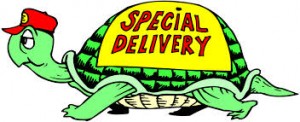


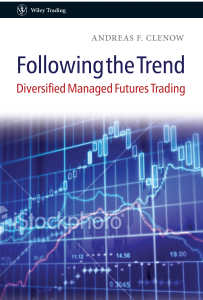
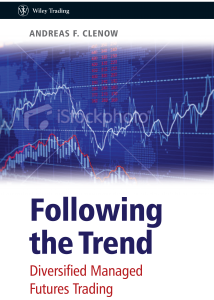
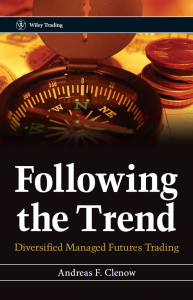

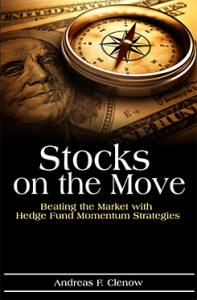


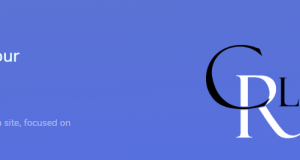


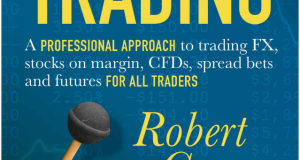
Like the and sound of the book.
Good luck and let m know when it is published.
Should read “like the name and sound of the book.”
Thanks, Jimmy!
This site has been quiet for half a year while I wrote this book, but now I’ll step up the articles a bit again.
The publishers are trend followers too. In order to diversify, they invest in many “authors” in the hope that a couple of them will hit home run to make them millions…
Oh god.. Now I’m going to have nightmares about corn and copper finally waking up to the fact that I’m just using them, deciding to dump me and self trade…
Btw, as history has shown us, the only way to make millions from books is to write about wizards, murderous clowns, sparkly vampires or bdsm. Now I just have to figure out how to incorporate those elements into my next trading book.
Till Corn or Copper or ES wake up one day, we would definitely have to quit trading… LOL
Probably a more “fictitious” trend following books will sell better?
Entertaining read as always! Let us know when the book is out.
interesting insight… and we all thought you wrote a book to get rich…. (I joke)
Cover art suggestions were pathetic by the way…
Loved your first book! Please release an e-book format too of the new one with no restrictions on regional purchases! Amazon has weird rules where they don’t sell certain ebooks outside the US :(..took a lot of effort for me to get my hands on the first book and had to buy a hardcopy. It was well worth it though!
Congratulations – I always learn something new with your articles!
Hi Andreas! Re-reading your first book…again! It’s really helped me in my own system development process. Could I help you in anyway on your new book or website? I’m a qualified Creative Director in a Marketing agency in India and have a pretty good grasp of marketing communication, graphics, copywriting etc. Do let me know–I would be honoured to contribute in kind to your efforts.
Ni Nitesh,
Thanks for your kind words and your generous offer! At this time, almost everything is already complete, but perhaps I’ll come back to you on the next one…
Hi,
Please do provide an update when your book releases? While I disagree with a lot of what you write (in particular your emphasis on being overly risk-averse to cater to irrationally risk-averse clients), the base material of your work and the presentation was excellent and clear. I’m sure your upcoming book will be of the same standard and I will certainly purchase it.
I’m not surprised that Wiley doesn’t do any content or quality control when it comes to trading content – the stuff they publish (at times) is so bad, I scratched my head thinking: “How did that get published?” I guess now I know!
In all fairness, Mike, it’s not a Wiley problem. It’s a publishing industry problem.
While it’s quite difficult to get a publishing contract if you’ve spent ten years working on a great novel, it’s extremely easy to get a deal for a trading book. The publishers will take whatever they can get and that explains the varying quality.
They did do one useful thing for me actually. They suggested a change in title. As they rightly pointed out, these days you have to analyze google search patterns and find high impact key words, such as trend and follow… My original title for the first book was “Diversified Futures Trading for Hedge Fund Professionals”. In retrospect, a pretty crappy title.
As James Altucher put it, self publishing is the new business card 🙂
http://www.jamesaltucher.com/2012/01/self-publishing-your-own-book-is-the-new-business-card/
Hi Andreas, I noticed that the book is available to pre-order on amazon; however, amazon does not sell ebooks in the middle east so I couldn’t place an order. Can you please make this available through another source or directly throuhh your website aswell??
Yes, I just put the Kindle version up on Amazon for preorder: http://www.amazon.com/gp/product/B00YPHZO3W/ref=as_li_tl?ie=UTF8&camp=1789&creative=390957&creativeASIN=B00YPHZO3W&linkCode=as2&tag=follthetren-20&linkId=WIZVOPRUQUQER3DI
The paperback will be up on Amazon shortly too, for a targeted release on July 1.
To begin with, the book will only be available on Amazon. Later on, I might sell the ebook directly, downloadable from this site. The problem with that is to control distribution. I’d prefer not to have pdf copies all over the internet… I’m looking at some technical solutions, but it might take a few months.
No “look inside” available?
Is the strategy discussed in the book “tradeable” for retail investors?
Really appreciated your last book, but most retail investors do not have 1M$ lying around… 🙂
Hej Johan,
The Amazon Look Inside will be available. I just need to figure out how to set it up… Should be there soon. I’ll make some preview files available here as well when I find the time.
The big advantage with stocks is that you can trade with much lower capital. You should be able to trade this strategy with a few thousand bucks.
Dear Andreas,
I really enjoyed reading your book. As a retail investor, I do not have access to futures, so I tried to replicate your strategy on ETFs. I was happy to find an article from you, where you did the exact same thing and demonstrated that this works in principle:
https://www.tradingfloor.com/posts/trend-following-small-portfolios-part-2-2011322415
I was able to (roughly) reproduce the results from this article for the period from about 2003-2015:
http://i.imgur.com/LqzkuR4.png
However, when I extend the backtest to the 1990s, the results look awful:
http://i.imgur.com/JK6hbUg.png
According to my calculations, the performance of the trend-following strategy was a zero-sum game from 1990-2003. It was only after this that it really took off.
Did I make a mistake? Could you show a backtest going back longer than 2003?
Thanks,
Christian
Hi Christian,
I almost missed your comment. Seems like my spam filter didn’t like the links…
I wrote that article years ago and can’t really remember the details. For ETFs, clearly that wouldn’t work in the 90s as there were practically none around to be traded. Certainly not enough to get any sort of diversification anyhow.
Traditional futures based trend following models did extremely well in the 90s though. These were the days when trend following really was simple and very profitable. Now it’s a lot more complex and while it’s still profitable, it’s not as amazing as it was back then.
Your graph from 1990 looks odd. I’m not sure what strategy and markets were tested there, but something’s certainly not right.
Andreas
Interesting but not totally surprising that you’re going to self publish – congrats on making the decision.
For the buyer I don’t think there’s a difference and I doubt many people would tell so long as you’ve done the formatting correctly.
Time to market with self publishing is definitely a major plus: the roughly 24 hours Kindle takes is an order of magnitude quicker! Not to mention that some traditional publishers still don’t even make a Kindle version available, so they’re ignoring a large chunk of the market.
Andreas, great book. I got the Kindle version and was hoping to find the web versions of the charts and graphs. The link I found on your site (stocksonthemove.net) gets blocked as a phishing/malware site. Turning the blocker off gets me a webpage not available error. Are they available elsewhere?
Thanks,
V. Escobar
Andreas, I found the charts on your websites. Would it be possible to post the tables? Kindle cuts of the year returns so the reader can only see Jan-Dec individually. Easy enough to calculate, but would nice to just scan down the table.
Thanks,
V. Escobar